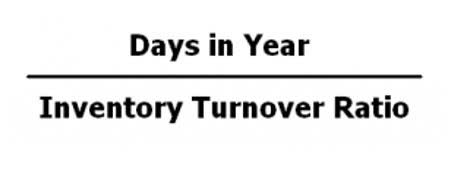
The most significant element to understand when it comes to capitalization rates is that real estate investors use cap rates to help determine whether they should invest in a property. To calculate the capitalization rate, investors use the cap rate formula, which includes the annual net operating income (NOI) of the property and its current market value. When it comes to capitalization rate, the bottom line is https://www.bookstime.com/ that they help investors better determine the profitability of potential real estate investment properties. This measure is computed based on the net income that the property is expected to generate and is calculated by dividing net operating income by property asset value and is expressed as a percentage. It is used to estimate the investor’s potential return on their investment in the real estate market.

Conceptually, a higher capitalization rate implies a higher potential return on investment (ROI) and more risk, whereas a lower cap rate coincides with a lower potential return but less risk. Commercial real estate investors use the cap rate to establish the relative attractiveness of a particular property to determine whether the asking price is overpriced or underpriced. Put simply, cap rate definition is the rate of return on a real estate investment property. In other words, it describes what part of your initial investment will return to you every year.
Highest and Lowest U.S. Cap Rates By Property Type
Small business owners and CEOs often ask us for advice on how to formulate a capitalization policy for their companies. To persons outside of accounting, the term “capitalization policy” may conjure up thoughts of junior high English and the rules of when to capitalize on persons, places and things. An expense is a monetary value leaving the company; this would include something like paying the electricity bill or rent on a building. When trying to discern what a capitalized cost is, it’s first important to make the distinction between what is defined as a cost and an expense in the world of accounting. A cost on any transaction is the amount of money used in exchange for an asset.
- Cap rates in real estate are calculated by dividing the net operating income (NOI) by the property’s market value.
- First determine the net operating income (NOI) of your subject property.
- The capitalization rate is based on the asset’s current market price, while the yield is calculated based on the cost of the property.
- The cap rate is a pro-forma measure of the implied return on an investment property as of the date of acquisition.
- This formula resembles the cap rate calculation, where the property market value is the current stock value, and dividends would match the NOI.
- Lenders use some very specialized calculations to determine whether to finance purchases or projects.
CBRE, which stands for Coldwell Banker Richard Ellis, is the world’s largest real estate services company. CBRE releases surveys that show current cap rates in the United States and current market sentiment. In CBRE’ Cap Rate Survey for Q3 2020, CBRE looked specifically at the impacts of COVID-19 on the real estate market. The survey notes that assets are currently being underwritten with lower income assumptions, pushing down the cap rate.
Market Size
Some grocery chains purchase warehouses to distribute inventory as needed to various stores. Some supermarkets even purchase large parcels of land to build not only their stores, but also surrounding shopping plazas to draw in customers. Generating cash flow from real estate allows you to retire sooner and develop a backup income stream.
This formula resembles the cap rate calculation, where the property market value is the current stock value, and dividends would match the NOI. It follows that the cap rate will be the real estate investor’s required rate of return minus the expected growth rate. The expected growth rate is the rate by which cash flows from the property will increase year over year. The cap rate is the most popular measure through which real estate investments are assessed for their profitability and return potential.
How to Calculate Cap Rate?
You can manipulate the formula to calculate the cap rate (k) if you know the other inputs. Get instant access to all of our current and past commercial real estate deals. A standard which of the following property types are valued using a capitalization rate? industry practice requires a 50bps spread – that is, the cap rate when selling the property should be 50 basis points lower than the cape rate when the asset was purchased.
- Also, the amount of principal owed is recorded as a liability on the balance sheet.
- The cap rate implies the rate of return an investor can expect based on the property’s market value and rental income.
- Marc is an avid runner who aims to run over 100marathons in his lifetime.
- By converting the stabilized NOI of a property into a percentage, the implied cap rate is a standardized metric that facilitates fair comparisons between different properties (“apples-to-apples”).
- In this example, the difference between a 5% cap rate and an 8% cap rate is $750,000.
- The formula for calculating the cap rate divides net operating income (NOI) by the market value of a property, as of the present date.
Buyers can use this estimated market value to quickly see if they are overpaying, and sellers can use it to see if they are selling for less than what it might actually be worth. It is the book value cost of capital, or the total of a company’s long-term debt, stock, and retained earnings. A company that is said to be undercapitalized does not have the capital to finance all obligations. Overcapitalization occurs when outside capital is determined to be unnecessary as profits were high enough and earnings were underestimated. Your new colleague, Marielena, helped a client organize his accounting records last year by types of assets and expenditures. Instead, she made the following classifications and gave them to the client who used this as the basis for accounting transactions over the last year.

